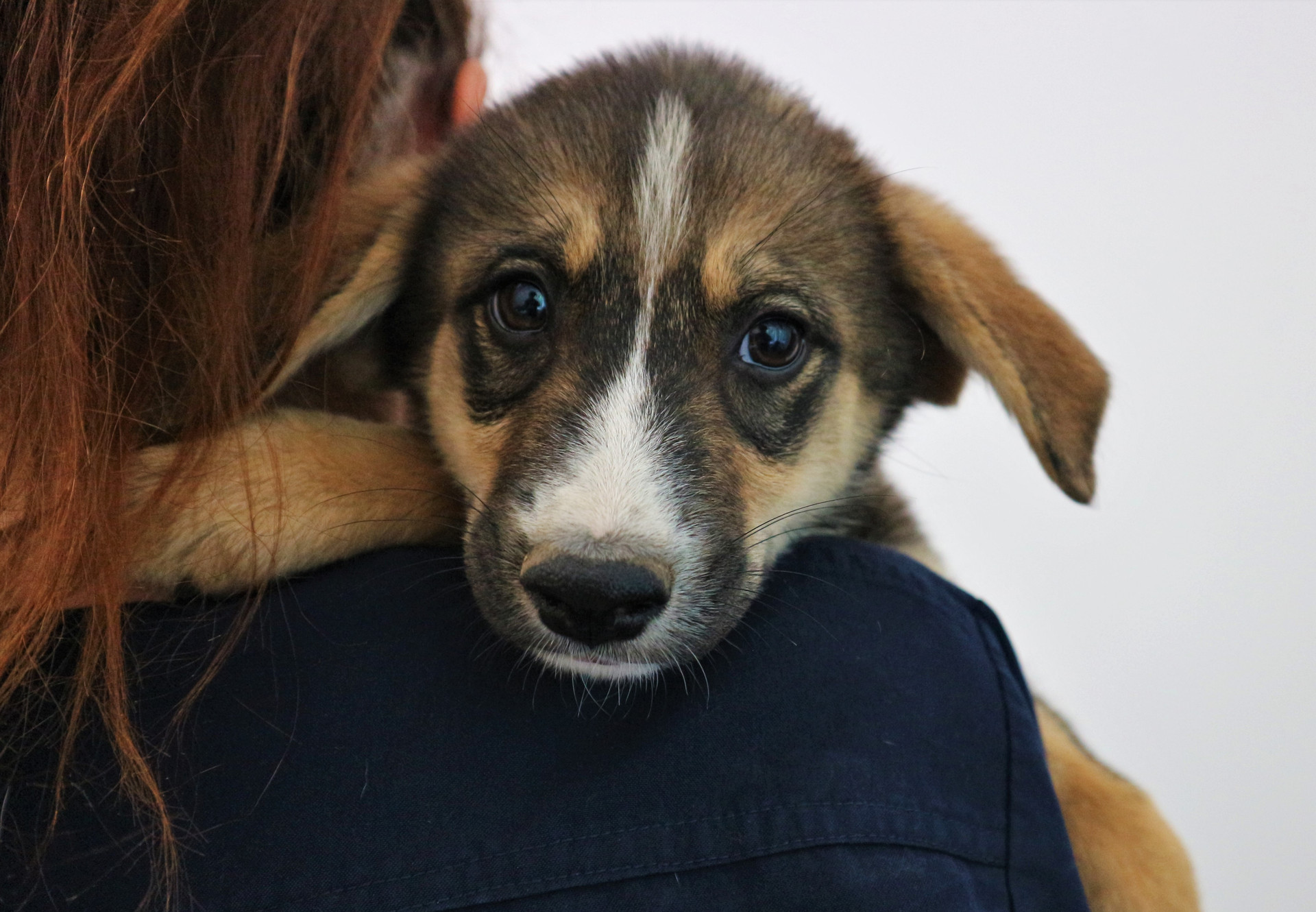
“Humans’ Best Friend” – The Dog
Our companion for thousands of years
The dog, a mammal that goes by the scientific name Canis lupus familiaris, is a subspecies of the grey wolf (Canis lupus). Together with the cat, the dog is one of the most popular pets worldwide. Evidence shows that dogs have lived with us humans for more than 14,000 years. At first, they were primarily our hunting partners, companions and protectors. Later, however, in many parts of the world, they also became our friends, family members, partner substitutes and comforters.
Ancestry
Fossil finds in North America, Europe and Asia indicate that about 60 million years ago there lived a species of carnivore that resembled a weasel, with the scientific name Miacis. About 30 to 40 million years ago it evolved into the Cynodictis (Greek = “slender dog marten”), an animal that looked rather more dog-like. Two branches descended from it, one in Africa and the other in Eurasia. The latter is known by the scientific name Tomarctus and is considered to be the progenitor of wolves and subsequently dogs. It lived about 15 million years ago.
Domestication
It is still not completely known where and how often dogs were domesticated or who domesticated them. However, it is thought that dogs began to domesticate themselves by following humans so they could feed on the remains of their prey. According to a new study published in the scientific journal PNAS, this process started about 23,000 years ago in Siberia.
Role in human society
Dogs have played an important role in human society for a very long time, and the canine-human relationship is still thriving in many forms in the present day. For early hunter-gatherers, dogs were hunting companions and bodyguards against predators. With the domestication of farm animals, dogs took over tasks such as herding and acting as guard dogs, protecting farmers’ goats and sheep. Today, while they continue to perform these tasks in some places, they are also utilised in many other fields.
- They support the police and customs, using their ability to locate people and sniff out illegal substances.
- They help patients to recover through animal-assisted therapy.
- They guide their blind or visually impaired owners safely through their surroundings.
- They bring joy to residents on their visits to nursing homes.
- And they give strength and comfort to their owners as emotional support animals.
This is particularly the case in the Western world. Elsewhere – especially in some Asian countries – dogs are also considered a source of meat for consumption.
Dogs in science
Although dogs have played a major role in people’s lives for thousands of years, for a long time little scientific attention was paid to dog. As the scientific article The New Era of Canine Science: Reshaping Our Relationships With Dogs points out, this has only changed in the last two decades: canine research is now rapidly becoming an established, influential and highly interdisciplinary field. More and more centres are emerging around the world dedicated to the study of dogs and their interactions with humans. Areas of interest include understanding the origins, behaviour and cognition of dogs, recognising the value of dogs as a unique biological model.
Thanks to this recent development, science is now able to confirm how important dogs are in human society and how essential it is to prioritise the welfare of these animals. As a consequence, we see a better awareness of dogs and their needs, as well as a move to tackle animal welfare problems such as abandonment, poor nutrition, insufficient exercise and lack of veterinary checks, which sadly are still all too common.
Source
Society NG. A Brief History of Dogs. National Geographic Society. 2019 Aug 30 [accessed 2021 Oct 26]. http://www.nationalgeographic.org/video/brief-history-dogs/
The History of Dogs | Origins, domestication and breeding. 2019 [accessed 2021 Oct 26]. https://historycooperative.org/the-history-of-dogs/
Harmon K. The Origin of Dogs. Scientific American. [accessed 2021 Oct 28]. https://www.scientificamerican.com/article/the-origin-of-dogs/
Man’s Best Friend Originated in Europe. [accessed 2021 Oct 28]. https://www.utu.fi/en/news/news/mans-best-friend-originated-in-europe
Perri AR, Feuerborn TR, Frantz LAF, Larson G, Malhi RS, Meltzer DJ, Witt KE. Dog domestication and the dual dispersal of people and dogs into the Americas. Proceedings of the National Academy of Sciences. 2021 [accessed 2021 Dec 7];118(6). https://www.pnas.org/content/118/6/e2010083118. doi:10.1073/pnas.2010083118
Search. [accessed 2021 Nov 30]. https://www.gbif.org/species/4833264
Search. [accessed 2021 Nov 30]. https://www.gbif.org/species/4833456
Miacis | fossil mammal genus | Britannica. [accessed 2021 Nov 30]. https://www.britannica.com/animal/Miacis
Tomarctus Cope, 1873. [accessed 2021 Nov 30]. https://www.gbif.org/species/4833456
Paleobiology Collections Search. [accessed 2021 Nov 30]. https://collections.nmnh.si.edu/search/paleo/?ark=ark:/65665/3351b45043ff24cae8238b2cccc4d62f8
Paleobiology Collections Search. [accessed 2021 Nov 30]. https://collections.nmnh.si.edu/search/paleo/?ark=ark:/65665/39d16da3d6d734260841a1a9e9a60ff46
Paleobiology Collections Search. [accessed 2021 Nov 30]. https://collections.nmnh.si.edu/search/paleo/?ark=ark:/65665/3fe3483811f3b43cd941fbf06c78dc08f
Dog | Encyclopedia.com. [accessed 2021 Nov 30]. https://www.encyclopedia.com/plants-and-animals/animals/dogs/dog
Botigué L, Song S, Scheu A, Gopalan S, Pendleton A, Oetjens M, Taravella A, Seregély T, Zeeb-Lanz A, Arbogast R-M, et al. Ancient European dog genomes reveal continuity since the Early Neolithic. Nature Communications. 2017;8:16082. doi: https://doi.org/10.1038/ncomms16082
Skoglund P, Ersmark E, Palkopoulou E, Dalén L. Ancient Wolf Genome Reveals an Early Divergence of Domestic Dog Ancestors and Admixture into High-Latitude Breeds. Current Biology. 2015;25(11):1515–1519. doi: https://doi.org/10.1016/j.cub.2015.04.019
MacLean EL, Fine A, Herzog H, Strauss E, Cobb ML. The New Era of Canine Science: Reshaping Our Relationships With Dogs. Frontiers in Veterinary Science. 2021 [accessed 2022 Feb 14];8. https://www.frontiersin.org/article/10.3389/fvets.2021.675782





